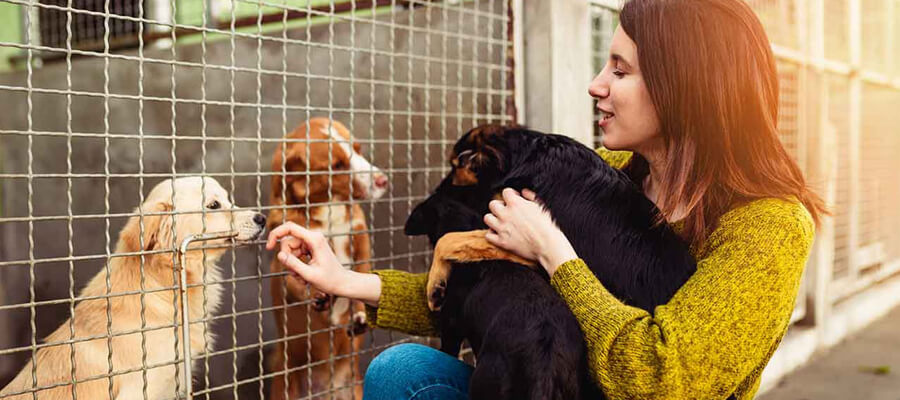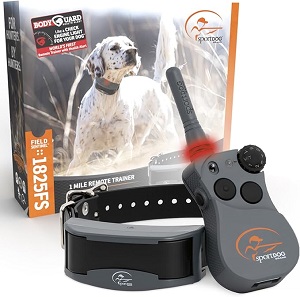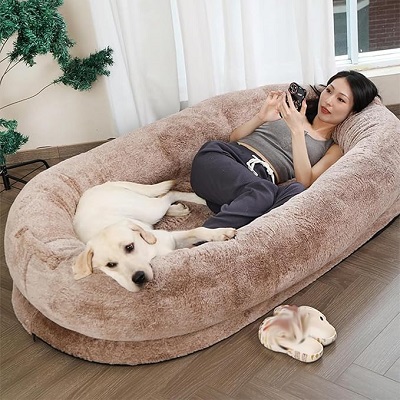
How to Choose the Right Rescue Dog for Your Family
Choose the Right Rescue Dog for Your Family
Introduction
Adopting a rescue dog can be a deeply rewarding experience, offering a second chance at life for a deserving animal. However, the process of choosing the right rescue dog for your family requires careful consideration. Each dog has a unique personality, background, and needs, making it essential to find one that fits your family's lifestyle. In this guide, we'll explore practical steps and tips to help you make an informed decision that will benefit both your family and your new furry friend.
1. Assess Your Family’s Lifestyle
Before you start looking for a rescue dog, it's crucial to evaluate your family's lifestyle and how a dog will fit into it. Consider the following factors:
Key Considerations:
- Activity Level: Determine how active your family is. Do you enjoy outdoor activities and exercise, or is your family more laid-back Active families may thrive with high-energy breeds, while less active households may prefer calmer dogs.
- Time Commitment: Dogs require time for training, socialization, exercise, and companionship. Assess how much time each family member can dedicate to a new pet.
- Space Availability: Consider your living situation. Do you have a yard or nearby parks for walking Larger breeds typically need more space, while smaller dogs can adapt well to apartments.
Why It Matters: Understanding your family's lifestyle helps narrow down the type of dog that would best suit your needs.
Essentials for Your Newly Adopted Pet
Welcoming a shelter pet into your life is a beautiful journey. Here are some handpicked items to help your new friend feel safe, loved, and right at home:
2. Decide on the Dog's Size and Breed
Different dog breeds come with unique characteristics, energy levels, and temperaments. While it’s essential to remember that every dog is an individual, certain breeds may align better with your family's lifestyle.
Breed Considerations:
- Small Breeds: Ideal for apartments or families with limited space. Breeds like Pugs or Dachshunds can be great companions for smaller living areas.
- Medium Breeds: Versatile and often adaptable to various living situations. Breeds like Beagles or Bulldogs may be suitable for both active and less active families.
- Large Breeds: Often require more space and exercise. Breeds like Labrador Retrievers or Golden Retrievers are typically friendly and good with children.
Tip: Research breed characteristics to understand their typical behavior, exercise needs, and grooming requirements.
3. Consider the Dog's Age
When adopting a rescue dog, you’ll encounter various age groups, each with its advantages and challenges.
Age Group Considerations:
- Puppies: Energetic and playful, puppies require extensive training and socialization. They can be a great choice for families willing to invest time in training.
- Young Adults: Generally more settled than puppies, young adult dogs often have some training. They are ideal for families looking for a balance between energy and maturity.
- Senior Dogs: Often overlooked, senior dogs can be calm, loving companions. They usually require less exercise and training, making them a suitable choice for families seeking a more relaxed pet.
Why It Matters: Understanding the age group that fits your family’s energy levels and lifestyle is crucial in making the right choice.
4. Evaluate Temperament and Behavior
Each rescue dog has a unique personality and temperament. When visiting shelters or rescue organizations, pay attention to the following:
Behavioral Observations:
- Socialization: Observe how the dog interacts with people and other animals. A dog that is friendly and social may be a better fit for a family with children.
- Energy Level: Watch how the dog behaves in different situations. A calm dog may be more suitable for a quieter household, while a playful dog might thrive in an active environment.
- Reactivity: Some dogs may exhibit fearful or aggressive behavior towards strangers or other dogs. Understanding these tendencies can help you choose a dog that is a good match for your family.
Tip: Spend time with the dog before adopting to assess their temperament and see how they interact with your family members.
5. Meet with Shelter Staff and Volunteers
Shelter staff and volunteers often have valuable insights into the dogs available for adoption. They can provide information about each dog’s history, behavior, and personality.
Questions to Ask:
- Background History: Inquire about the dog’s previous living situation and any known behavioral issues.
- Health and Medical History: Ask about vaccinations, spaying/neutering, and any health concerns that might affect the dog’s care.
- Behavioral Traits: Discuss how the dog interacts with children, other pets, and new environments.
Why It Matters: Gaining insight from those who know the dog best can help you make a more informed decision.
6. Consider the Dog's Compatibility with Children and Other Pets
If you have children or other pets, it's essential to ensure that the rescue dog will fit well into your existing family dynamic.
Compatibility Considerations:
- Child-Friendly Breeds: Some breeds are known for being good with children. Research breeds that tend to be gentle and patient.
- Meet and Greet: Arrange for your children and existing pets to meet the potential rescue dog before making a decision. Observe how everyone interacts and if there are any signs of anxiety or aggression.
Why It Matters: Ensuring compatibility will help create a harmonious household for everyone involved.
7. Prepare Your Home for a New Dog
Before bringing a rescue dog home, it’s essential to prepare your living space to ensure a smooth transition for your new pet.
Preparation Steps:
- Dog-Proof Your Home: Remove any hazards that could pose a risk to your dog, such as toxic plants, small objects, or accessible trash cans.
- Create a Safe Space: Designate a specific area for your new dog with a comfortable bed, food, water, and toys to help them feel secure.
- Stock Up on Supplies: Purchase essential supplies such as food, bowls, a leash, collar, toys, and grooming tools to ensure you're ready for your new arrival.
Why It Matters: A prepared environment helps your dog adjust to their new home and reduces stress during the transition.
8. Be Patient During the Adjustment Period
Bringing a rescue dog into your family is an exciting experience, but it’s essential to be patient during the adjustment period. It may take time for your new pet to acclimate to their new surroundings.
Tips for a Smooth Transition:
- Establish Routines: Create consistent feeding, walking, and play schedules to help your dog feel secure.
- Provide Training and Socialization: Invest time in training your dog to help them learn commands and appropriate behaviors. Socialization with other dogs and people can also build confidence.
- Monitor Behavior: Keep an eye on your dog’s behavior and be understanding if they display signs of anxiety or stress. Providing reassurance and a safe environment can help them adjust.
Why It Matters: Patience and understanding can foster a stronger bond between you and your rescue dog, making the transition smoother.
9. Be Prepared for Challenges
Adopting a rescue dog can come with unique challenges, especially if the dog has a traumatic background or behavioral issues. Be prepared for the possibility of setbacks.
Common Challenges:
- Separation Anxiety: Many rescue dogs may experience anxiety when left alone. Consider gradual desensitization techniques and seek professional help if necessary.
- Behavioral Issues: Some dogs may have habits that need modification, such as excessive barking or chewing. Positive reinforcement training methods can help address these issues.
- Health Concerns: Be prepared for potential health issues that may arise, especially with older or previously neglected dogs. Regular vet check-ups and a proper diet can mitigate some concerns.
Why It Matters: Being prepared for challenges helps set realistic expectations and enables you to provide the support your new dog may need.
10. Celebrate Your New Life Together
Once you’ve chosen the right rescue dog for your family and allowed time for adjustment, it’s time to celebrate your new life together!
Ways to Bond:
- Regular Activities: Engage in daily activities like walks, playtime, and training sessions to strengthen your bond.
- Explore New Environments: Take your dog to different parks, hiking trails, or pet-friendly events to create new experiences together.
- Share the Love: Involve your family members in care and training, fostering a sense of teamwork and connection.
Why It Matters: Celebrating your new life together will create lasting memories and strengthen the bond between your family and your new furry friend.
Conclusion
Choosing the right rescue dog for your family is a significant decision that requires careful thought and consideration. By assessing your family's lifestyle, understanding dog breeds, evaluating temperament, and preparing your home, you can find a furry companion that fits seamlessly into your life. Remember to be patient during the adjustment period and be prepared for challenges along the way. Ultimately, the joy and companionship that come from rescuing a dog can be incredibly fulfilling, creating a bond that lasts a lifetime.
Affiliate Products
We may earn a small commission when you shop through our links — it helps us keep sharing love and care for every dog out there, at no extra cost to you.
Up to 75% Discount

Dog Collar with Health Monitoring
BUY NOW »
Up to 55% Discount

Luxury Faux Furhuge Napping Bed
BUY NOW »

